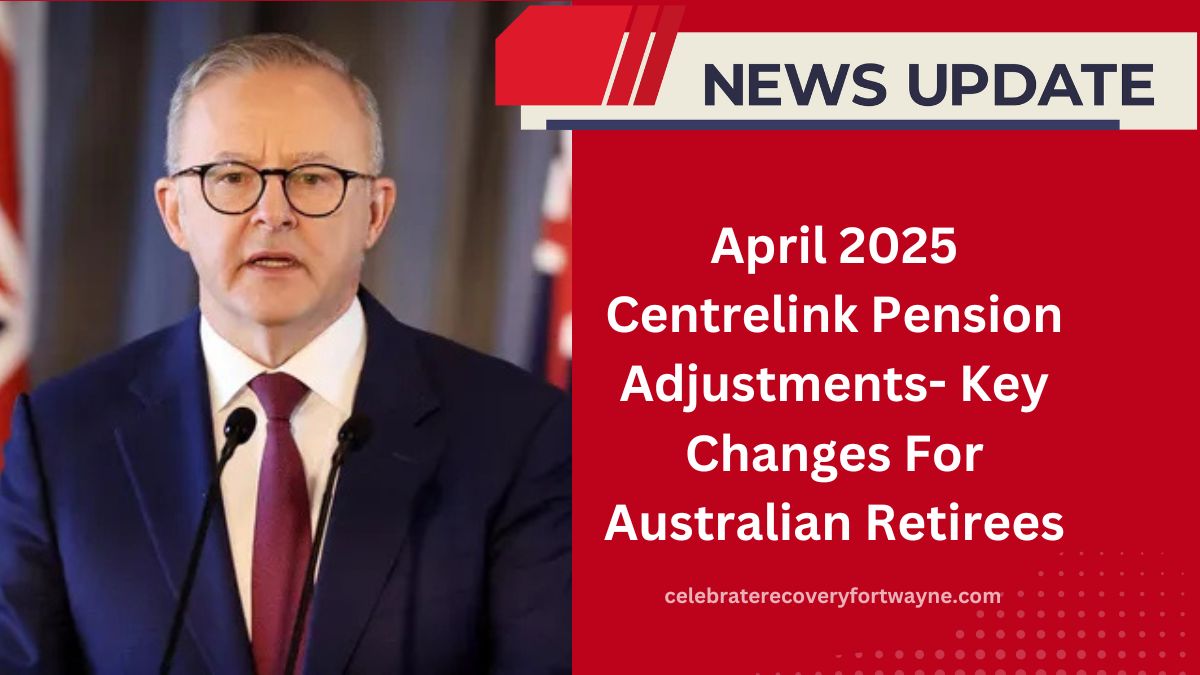In April 2025, Centrelink will introduce significant changes to the Age Pension system to help Australian retirees manage rising living costs and evolving financial needs.
These adjustments are designed to increase support for older Australians, making the pension system more responsive and fairer. Below, we break down the key updates retirees should be aware of.
Higher Age Pension Payments to Ease Living Costs
A central part of the April 2025 changes is the increase in Age Pension payments. For singles, the fortnightly payment will rise by 4.8%, increasing from $1,158 to approximately $1,213.50.
Couples will also see a 4.2% increase in their combined payment, moving from $1,754 to $1,828 per fortnight.
These increases are intended to help pensioners cope with the higher cost of living, especially in sectors like healthcare, utilities, and housing.
Expanded Asset Thresholds to Support More Retirees
The asset test, which determines pension eligibility based on assets (excluding the family home), will be revised to accommodate current market conditions.
The asset threshold for homeowners will increase by $50,000 for singles and $75,000 for couples. Non-homeowners will benefit from a $100,000 increase in asset thresholds for both singles and couples.
Additionally, the taper rate, which determines how much the pension is reduced for assets above the threshold, will decrease from $3.00 to $2.75 per $1,000 over the threshold.
These revisions are designed to ensure that retirees with modest savings and investments are not unfairly penalized and will continue to receive financial assistance.
Deeming Rates Adjusted to Reflect Low-Interest Environment
In response to prolonged low-interest rates, the government will reduce the deeming rates used to calculate returns from financial assets.
For singles with assets up to $60,000 and couples with up to $100,000, the lower deeming rate will drop from 0.25% to 0.2%.
For amounts exceeding these thresholds, the upper deeming rate will decrease from 2.25% to 2%. These changes will help approximately 870,000 pensioners retain more of their Age Pension payments despite reduced earnings from investments.
Increased Superannuation Guarantee to Boost Savings
Starting in April 2025, the Superannuation Guarantee (SG) contribution will rise from 11.5% to 12%. This increase is designed to help workers build larger retirement savings over their careers.
The added contributions could range from $18,000 to $30,000 for the average worker, depending on income levels and the length of employment.
This increase in superannuation contributions will strengthen the financial security of future retirees, providing them with a larger nest egg when they retire.
Flexibility in Super Contributions for Older Workers
Another change that will benefit retirees aged 67 to 74 is the expansion of exemptions to the work test for non-concessional contributions to superannuation.
From April 2025, workers in this age group will be able to make contributions to their superannuation without having to meet the work test, allowing them to add more to their retirement savings, even if they are no longer employed.
Introduction of New Supplementary Benefits
To further support retirees, Centrelink will introduce several new supplementary payments. The Carer Recognition Supplement, which offers $85 fortnightly, will assist older Australians who provide at least 20 hours of unpaid care per week.
The Digital Inclusion Payment, worth $250 annually, will help pensioners afford digital devices or internet access.
Additionally, the new Housing Security Allowance will replace the Commonwealth Rent Assistance, offering higher payment limits and tying adjustments to rental market trends.
Transitional Protections for Smoother Adjustment
To help retirees transition to these changes, the government will implement transitional protections. Retirees aged 67 and older on April 1, 2025, will not be affected by new qualifying age changes.
Furthermore, a two-year grandfathering period will allow homeowners impacted by changes to asset thresholds time to adjust their finances before their entitlements are reduced.
Impact on Different Groups of Retirees
The April 2025 changes will have varying effects depending on the type of retiree. Full-rate pensioners stand to gain the most from the increases in base payments and new supplementary assistance. P
art-rate pensioners will also see some benefits from the updated taper rates. Wealthier retirees with high-value assets may face reduced entitlements, while self-funded retirees can benefit from adjustments to deeming rates and increased superannuation flexibility.
A More Equitable and Responsive Pension System
These changes reflect the Australian government’s commitment to creating a fairer and more responsive pension system.
The adjustments aim to provide retirees with more financial flexibility, ensuring that they can maintain a comfortable and secure standard of living in retirement.
Centrelink Pension Adjustments at a Glance
| Change | Details |
|---|---|
| Age Pension Increase | Singles: $1,213.50, Couples: $1,828 per fortnight |
| Asset Test Thresholds | Increased by $50,000 (singles) and $75,000 (couples) for homeowners |
| Deeming Rate Reductions | Lower rate: 0.2% (singles with assets ≤ $60,000) |
| Superannuation Guarantee | Raised to 12% starting April 2025 |
| New Supplementary Benefits | Includes Carer Recognition, Digital Inclusion Payment, Housing Security Allowance |
| Work Test Exemption | Expanded for retirees aged 67-74 |
FAQs
What is the Carer Recognition Supplement?
The Carer Recognition Supplement provides $85 fortnightly to older Australians who provide at least 20 hours of unpaid care per week.
How will the deeming rate changes benefit retirees?
The deeming rate reductions will help retirees with assets up to $100,000 retain more of their Age Pension payments by lowering the rate at which investment income is calculated.
What is the new Housing Security Allowance?
The Housing Security Allowance will replace the Commonwealth Rent Assistance, offering higher payment ceilings and linking adjustments to rental market trends.
